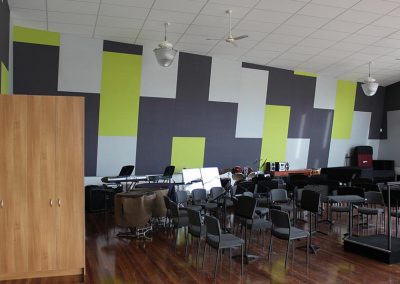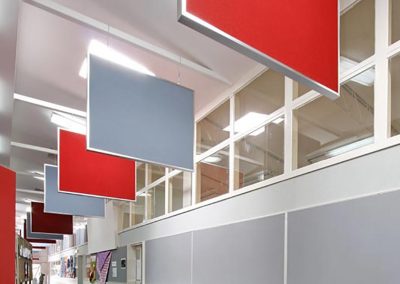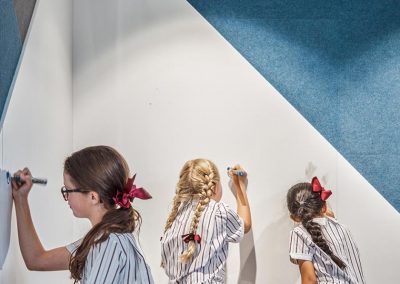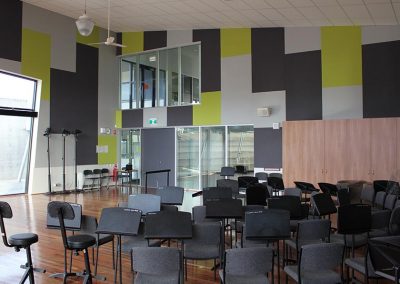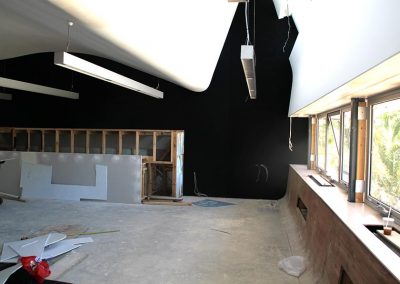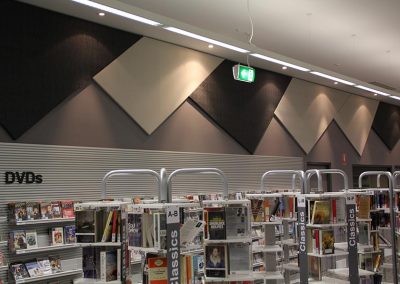Soundproofing Classrooms
Soundproofing Classrooms
Best Classroom Soundproofing Products
We can create unique spaces that are acoustically treated using our specialised products and tailored designs. With our industrial cutting machines, we can create the perfect fit for the best solution to your learning environment.
Whether you are a builder needing a quality install for a new school project, or a principal wanting to improve an existing learning area – we have the resources and experience to provide advice or to complete the project with a professional finish.
Our products for soundproofing classrooms within the education sector include (but are not limited to):
– Pinboards
– Whiteboards
– Floor-to-ceiling acoustic pinboards
– Acoustic panelling
– Ceiling tiles
– 3D wall & ceiling tiles
– Decorative baffle acoustic ceilings
– Printed panels
How Noise Impacts Student Learning
Various studies show that noise exposure affects educational outcomes, and other research provides evidence of mechanisms to explain these effects of noise on learning. Speech intelligibility studies have found that student’s ability to recognize speech sounds is decreased by even modest levels of ambient noise, and this effect is magnified for younger children.
Soundproofing Classrooms – Remove background noise
Most learning in school classrooms involves speaking and listening as the primary communication modes: Students learn by listening to the teacher and to each other (Goodland, 1983). Excessive background noise or reverberation (i.e., many delayed reflections of the original sound) can interfere with speech perception and, consequently, can impair educational outcomes. Careful attention to acoustical design requirements and considering classroom soundproofing is essential for creating an effective learning environment.
Classroom Soundproofing Design is critical
Acoustical design involves designing to control sound to facilitate improvement in the perception of speech sounds. Controlling sound through classroom soundproofing should focus primarily on reducing unwanted noise, and secondarily on controlling excessive reverberation. Good acoustical design can allow for more accurate verbal interaction and less repetition among teachers and students because spoken words are clearly understood, and as a consequence, it can facilitate learning. There is also evidence that good acoustical design may have a health benefit for teachers, by reducing the incidence of voice impairment.
Soundproofing Classrooms – Greater importance for younger learners
“the ability to focus on speech is a developmental skill that evolves with the maturation of the brain and mastery of language. Because the auditory mechanism does not fully mature until age 13 to 15 years, young children … require better acoustical environments than adult listeners to achieve equivalent word recognition scores. (Anderson, 2004, p. 119)”
Content attributed to The National Academic Press. For more information read this article: Noise, Acoustics, Student Learning and Teacher Health
We have experience in soundproofing classrooms. Contact us to find out more.
5 Worst Negative Effects of a Loud Classroom
A noisy classroom can have profound negative impacts on both students and teachers, affecting various aspects of learning and overall well-being. Without investing in proper classroom soundproofing, the classroom can become a noise-filled room that poses several risks to both students and teachers. Here are 5 key ways in which excessive noise can disrupt the educational environment:
1. Impaired Concentration:
Excessive noise levels in the classroom can make it difficult for students to concentrate on their lessons and tasks. Background noise from nearby classrooms, outdoor activities, or mechanical equipment can distract students, leading to reduced focus, attention, and engagement with the material being taught. This can hinder learning outcomes and academic performance across all subject areas. To combat this, consider investing in classroom soundproofing.
2. Communication Challenges:
Effective communication between teachers and students is essential for delivering instruction, clarifying concepts, and facilitating class discussions. However, in a noisy classroom environment, verbal communication may be impeded by competing sounds, making it challenging for students to hear instructions or participate in classroom dialogue. This can lead to misunderstandings, delays in learning, and frustration among both teachers and students. With classroom soundproofing, reverberations and excessive noise can be minimised to allow effective communication.
3. Increased Stress and Anxiety:
Persistent exposure to high noise levels can contribute to elevated levels of stress and anxiety among students and teachers. The constant background noise can create a sense of agitation, irritability, and discomfort, making it challenging for individuals to relax and focus on their work. Prolonged exposure to stressful environments can negatively impact mental health and well-being, leading to fatigue, burnout, and decreased motivation to learn or teach. For the benefit of both the students and teachers who are involved in the classroom for many hours throughout the school term, invest in classroom soundproofing to reduce stress and anxiety.
4. Negative Health Effects:
Excessive noise in the classroom can have adverse effects on physical health, including elevated blood pressure, headaches, and fatigue. Prolonged exposure to loud noise levels may also contribute to hearing loss or exacerbate existing auditory conditions among students and teachers. Additionally, noise-related stressors can disrupt sleep patterns and hinder overall cognitive function, further compromising academic performance and overall quality of life.
When it comes to the workplace, Safe Work Australia has advice on measuring and evaluating safe noise levels in the workplace.
5. Disruption of Classroom Dynamics:
A noisy classroom environment can disrupt the natural flow of instruction and classroom dynamics, hindering the effectiveness of teaching and learning activities. Teachers may struggle to maintain control and order in the classroom, leading to disciplinary issues and disruptions in the learning process. Additionally, excessive noise levels can impede collaborative activities, group discussions, and cooperative learning experiences, limiting opportunities for peer interaction and engagement.
In conclusion, the negative impacts of a noisy classroom extend beyond mere annoyance to encompass significant disruptions to teaching, learning, and overall well-being. Addressing noise-related challenges requires proactive measures such as investing in classroom soundproofing. Classroom soundproofing can create a conducive learning environment, and support the academic success and holistic development of all students and educators.
Get a quote
If you are interested in soundproofing classrooms, let’s discuss your specific requirements and the wide range of acoustic products that can provide the perfect solution. Just send us a message describing your project and we will get in touch with you.

